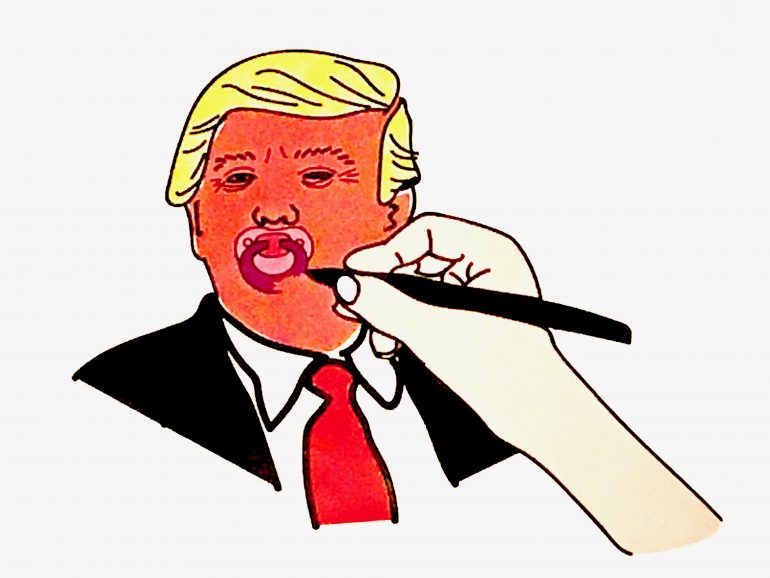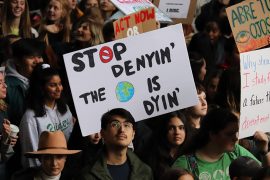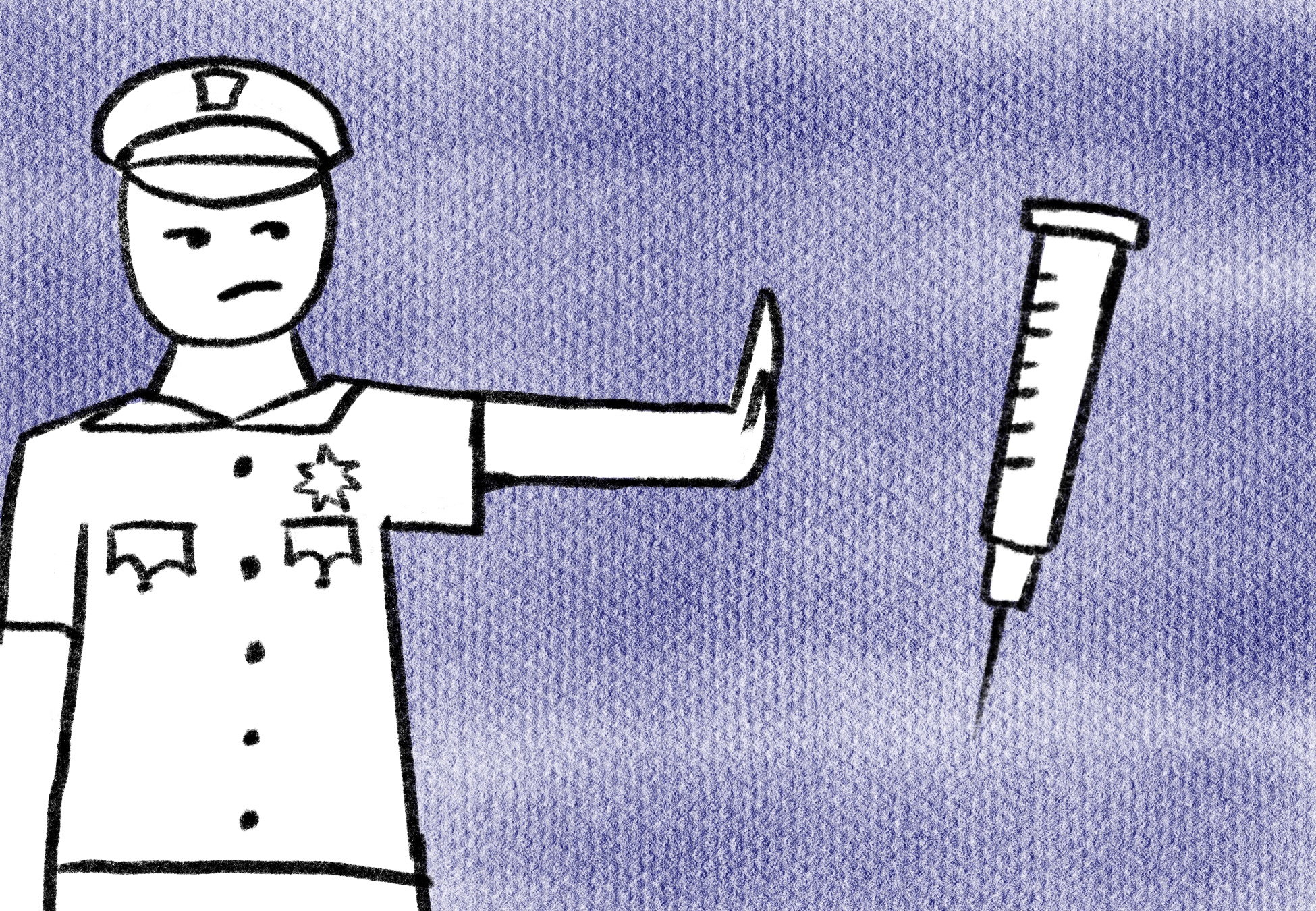On Jan. 5, 2018, journalist Michael Wolff released his tell-all book “Fire and Fury: Inside the Trump White House.” The book records the first 100 days of the Trump presidency within the White House. Wolff was granted permission to write the book by Hope Hicks, on the condition that he shed a positive light on the administration. Wolff agreed, but proceeded to drift from the agreed-upon terms and instead wrote what he had observed and believed to be the truth. The book was met with ravenously eager public reception. “Fire and Fury” became an instant bestseller and has already sold over 1 million copies. Since then, it’s been a major highlight in public discourse, analyzed under intense scrutiny, and may even be expanded into a screenplay for a television series. The book paints a very discouraging and unflattering picture of “the real Trump,” repeating many of the same descriptions that mainstream media has already observed, comparing President Donald Trump to a toddler, having to use pictures instead of words to understand issues, and having a foremost concern with his media image above all else. A bitterly disgruntled Trump promtply responded to the book with legal threats and admonished it on Twitter as a “phony book” that was “full of lies, misrepresentations, and sources that don’t exist!” . The book does tell a rather believable story, however; depicting the characters’ internal lives in ways that seem to correspond well with their public personas.
Were the book to be reduced to one common idea, it would be that Donald Trump has no leadership or political sense, and is deeply unfit for the presidency. The book begins on the night of the election. Wolff asserts that the whole Trump campaign had predicted they would lose, and then all the behind-the-scenes drama that corresponded to each major event and scandal for the Trump administration—from the presidential inauguration, to the firing of James Comey, up to Charlottesville. Each event is a piece of evidence that Wolff uses to build his case for Trump’s incompetence. He particularly focuses on the internal tug-of-war between Steve Bannon and junior-First-Couple Jared Kushner and Ivanka Trump (coined Jarvanka). Bannon is depicted as a scheming, radically nationalist demagogue, who, despite his radicalism, does truly believe in his cause. Jarvanka is described as a status-seeking, carefully crafted power couple who are mostly concerned with keeping up appearances and trying to prove their own worth under the shadow of daddy Trump. According to Wolff, both are opportunists intent on harnessing the power that Trump’s questionable charisma manifests for their own agendas. Trump, on the other hand, is a surprisingly quiet figure when he’s not ranting or rallying. His incompetence is emphasized more by his passivity than his assertiveness. Wolff asserts that Trump has no aptitude or patience to have his own agenda, and is constantly making impulsive emotional decisions that are easily manipulated by Bannon and Jarvanka or the media. To a fairly avid follower of the news, this does not seem to be a major revelation, but rather a light confirmation of a long held suspicion that there really is no method to the madness when it comes to Trump himself. This may be initially comforting to the prospective reader who has seen Donald Trump as Adolf Hitler, rather than Homer Simpson. Regardless, the book clarifies that the madness is surrounded by people with all of their own insidious methods of gaining power, which is where the danger truly lies.
The book also spends several passages analyzing Trump’s antagonistic relationship with the media, providing insights into Trump’s pre-political relationship with the media with respect to show business. When he was just a celebrity, Trump saw news as a way of taking the limelight. As the old adage goes, “all press is good press”. According to Wolff, this even bled into manipulating, designing, and planning news throughout his career. Wolff explains that Trump does not have enough political acumen to understand that this strategy is not nearly as effective in a presidential position. Wolff does have to give credit to Trump for turning government process—typically a painfully slow and meticulous affair—into a binge-worthy weekly spectacle, a feat never before accomplished in American history. Of course, not all of this phenomena is engineered by Trump. As a part of the media himself, Wolff is very self-aware of the role that his cohort plays. He knows that he is part of the problem. He unabashedly admits to the drunk-on-virtue revolutionary mob mentality in most mainstream media and calls this conundrum a historical paradox of “two unreliable narrators dominating American public life”. Ironically, there is a case to be made that this very book can nestle comfortably within this paradox as well.
“Fire and Fury” contains many factual errors, typos, and misspellings, as well as an overuse of colloquialisms (at one point in the middle of the sentence, Wolff forgets he’s writing a book and not sending a text, exclaiming “OMG”). Additionally, many of the scenes that Wolff describes are private discussions and descriptions of people’s thoughts that remain unsourced. It is unclear how Wolff would be privy to such information. While this doesn’t completely discredit the whole story, it does not do any favors for his rhetorical ethos. To further complicate matters, Wolff does not have the most gleaming track record as a journalist. According to Politico, he has been criticized by fellow journalists for betraying sources that had wished to remain anonymous and exaggerating his stories. In his beginning author’s note, Wolff even explains:
“Many of the accounts of what has happened in the Trump White House are in conflict with one another; many, in Trumpian fashion, are baldly untrue. Those conflicts, and that looseness with the truth, if not with reality itself, are an elemental thread of the book. Sometimes I have let the players offer their versions, in turn allowing the reader to judge them. In other instances I have, through a consistency in accounts and through sources I have come to trust, settled on a version of events I believe to be true.”
And so readers are pressed with this deeply frustrating and all-too-familiar problem of deciphering some kernel of truth amongst conflicting swaths of “fake news.” While the overall story seems very consistent with what political audiences have seen, it would not hurt for Wolff to provide some first-hand documentation. In an interview with MSNBC, Wolff was pressed to release his tapes and notes to help substantiate his many claims in the book; he refused, saying that his evidence was the book itself and “if it makes sense to you, if it strikes a cord, if it rings true, it is true.” For a liberal-minded reader who is unhappy with the current administration, it certainly does ring with an echo of truth in it. No doubt it will feel even more true if Hollywood produces an enthralling live-action TV series to further codify the story in the American canon. No doubt, with all of its scandal, drama, and a quintessential character everyone loves to hate, it would make a binge-worthy series. But it would be nice to get the story straight before going down that path. As Wolff should be painfully aware, Americans have can have a bit of a problem with distinguishing entertainment from reality.
This article originally appeared in the print edition of our February 2018, issue.





